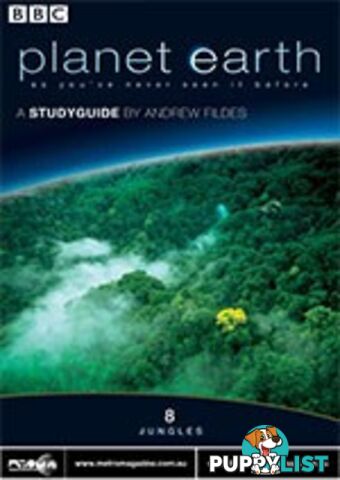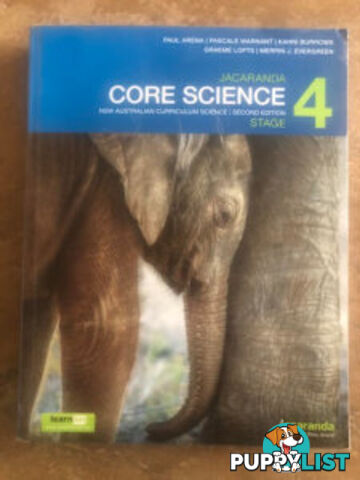This ad is on hold, please check again later.
Planet Earth - Episode 08 (Jungles) ( Study Guide)
$7.50

DESCRIPTION
Planet Earth is a BBC production with five episodes in the first series (episodes one through five) and six episodes in the second series (episodes six through eleven). Each episode examines a specific environment, focussing on key species or relationships in each habitat; the challenges they face; the behaviours they exhibit and the adaptations that enable them to survive. Recent advances in photography are used to achieve some spectacular 'first sights' – in particular, stabilised aerial photography gives us remarkable views of migrating animals and the techniques used by their predators to hunt them. As the series examines pristine environments where possible, they are often extreme. These are the parts of the world where few humans have chosen to live as the climate and landscape is too challenging, too difficult and dangerous. The plants and animals that do survive here have made some spectacular adaptations in forms and behaviour to live in these far reaches of the planet. The series is suitable for middle secondary students studying Science and SOSE, and for senior secondary students of Biology, Environmental Science and Geography. Jungles, or rainforests as we tend to call them in Australia, are one of the most unusual, special and precious ecosystems on the planet. They are not pleasant places for people to live, being rich in wild foods but also poor in soil, rich in insects that bite, predatory fungi and trees that sting. Traditionally the main threat has been from those in search of their precious, high quality timbers and others who mistakenly assume that such a rich ecosystem must be powered by a rich, fertile soil. The opposite is the case but still, every year, huge areas of the Amazon forest are cleared for grazing cattle, raised to supply the developed world with coffee and burgers. These forests are so huge that they can create their own climate and may have a significant contribution to the global climate, far beyond their own border. The jungle environment was seen as worthless except for what resources it could provide us. Despite the fact that the big rainforests like the Amazon and the Congo cover huge areas, others are now reduced to tiny, threatened pockets in desperate need of protection. In this episode we see the hidden life of an environment we rarely enter beginning with the displays of the birds of paradise in the deep jungles of New Guinea. Many of these birds were only discovered when their remarkable plumes were seen on the ceremonial outfits of highland tribesmen who were using them in much the same way as the birds, for ritual public display. We are introduced to an environment where the ground level is permanently dark and to the plants and animals that can take advantage of the gloom and damp at the base of the giant trees. This is a habitat that always has food for its inhabitants as there are no real seasons so the creatures that live there concentrate on defending their territories. An environment so humid that frogs can live out of the water and in the high trees. The unique nutrient recycling system is examined, showing how the richest ecosystem on earth can be supported by the poorest soils. The role of fungi in decomposing the forest floor leaf litter directly back to the tree roots is critical and still poorly understood. In those lower levels many of the animals are invertebrates, perhaps eighty per cent of the world's insects live here. Strangely, their greatest predators are not other animals but aggressive fungi that infect and infest their bodies – there is unique time lapse photography of the grim fate of many insects. Africa's Congo forests are large and deep enough to hide large animals such as small families of forest elephants who must seek out special ways of living in a nutrient poor environment with many toxic plants, sucking up rare medicinal muds from pools in clearings to counteract the effects of their lifestyle. Finally, we are introduced to a large tribe of rainforest chimpanzees, our close relatives and the comparison is unsettling to say the least. Their behaviour is both very social and very intolerant of their neighbours, a chilling comment perhaps on our own nature. SKU: SG414 Visit our website to view thousands more products like this and order online at:ADDITIONAL INFORMATION
- Price
- $7.50
- Condition
- New
- Delivers To
- Australia Wide








